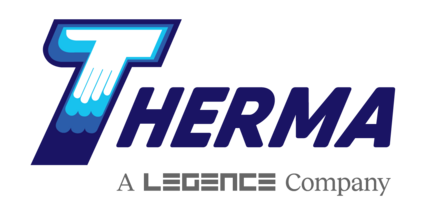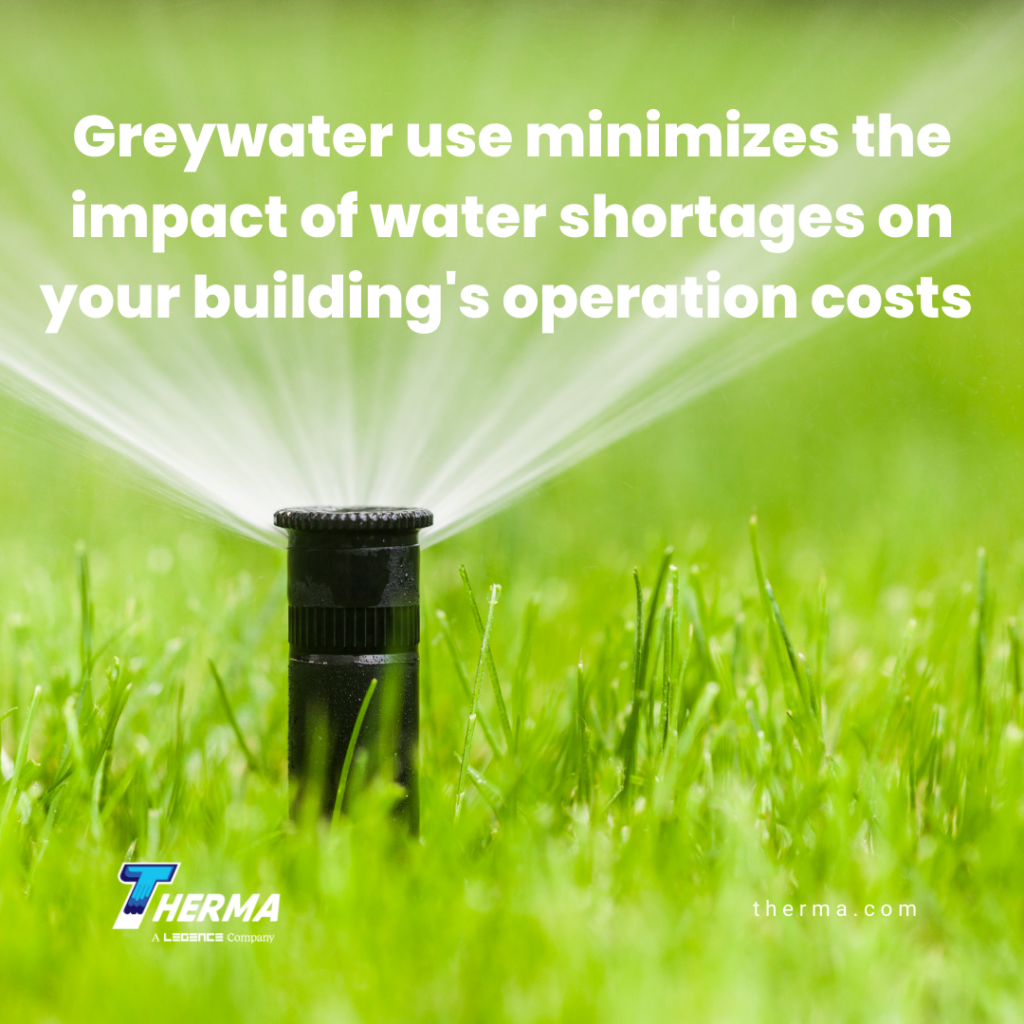Greywater systems are a creative way to conserve water as regions struggle to meet demand. By reusing water that would otherwise go down the drain after a single use, facilities save money and reduce dependency on utilities in the process.
What is Greywater?
Greywater is the wastewater produced during daily activities like washing hands, showering, using a dehumidifier or washing laundry. Instead of sending used water to sewers, greywater systems are designed to reuse this wastewater. The greywater is diverted for use in plumbing applications where reuse does not present a health hazard.
The most common applications are landscaping and toilets. Greywater is safe for irrigation if:
- Any detergents that were used are salt- and boron-free,
- The wastewater is reused within 24 hours of first use and
- The method of reuse keeps the greywater from directly contacting fruits and vegetables.
It is important to distinguish greywater from blackwater. Greywater does not include wastewater from toilets or urinals. Some states and municipalities also exclude water from dishwashers and kitchen sinks. Untreated water from these sources, called blackwater, can be harmful to human health and the environment.
Building owners and managers can reduce water-related costs and protect themselves from potential water shortages by installing a greywater system. There are many affordable options from simple greywater systems that use laundry water for landscaping to complex designs with all of the bells and whistles.
Budgeting for a Greywater System
Greywater system design depends on the end use of the water. Systems can divert greywater to toilets, or business owners may opt to use greywater for irrigation. Project designs should consider local and state regulations which may specify design requirements or use limitations.
According to Greywater Action, the simplest systems cost as little as $100 to self-install. For more complex systems, costs range anywhere from $800 to $20,000 for full installation. Features such as automation, drip irrigation equipment, and the ease of consolidating and directing the greywater all contribute to higher installation costs.
Cost analysis for the system design should include piping, valves, irrigation tubing, tanks, plumbing components, permit and inspection fees, and installation. Installation and future maintenance costs of a system should be compared against the building’s water usage and the energy costs of pumping used water back to wastewater treatment plants.
Challenges of Implementing Greywater Systems
The first potential challenge for existing buildings and new construction may be local regulations. Even if a state permits the use of greywater systems, local building codes can supersede state regulations. Before investing in a design, research what is or is not legal for the location.
Existing buildings face additional challenges as they may not have been designed to separate greywater from the blackwater of toilets and urinals. Retrofitting a greywater system is more costly than including one in a new construction project. Having to retroactively separate greywater requires additional plumbing.
Hybrid Systems
If wastewater typically flows to a centralized wastewater treatment system, as is the case in more urban and densely populated areas, facilities may need to implement a hybrid system. This dual system directs blackwater to the normal sewage system and greywater to either an onsite or community decentralized system. By creating a separate system for processing and using greywater locally, the burden on centralized systems is reduced.
Another alternative is a hybrid system designed to treat both greywater and blackwater. Such systems require significant upkeep due to the hazards of recycling blackwater. However, reusing the treated water for toilets, irrigation, and cooling makes it cost-effective as it reduces dependence on local fresh water supplies by over 75 percent as well as cuts the associated costs of pumping wastewater from the building.
Saving money on utilities while maintaining landscapes, especially in light of increasing water shortages, can be challenging. Implementing a greywater system is a strategic move that benefits facilities and surrounding communities. Reach out to Therma to discuss your greywater options.
Sources:
Elemental.Green – The Complete Beginner’s Guide to Greywater Systems
Greywater Action – How much does a greywater system cost?
EPA – HUD Water Wednesdays – Greywater Reuse—Is it Right for Your Facilities?
Greywater Action – Commercial Scale Greywater Systems
IOSR Journal of Engineering (IOSRJEN) – Suitability of Grey Water Recycling as decentralized alternative water supply option for Integrated Urban Water Management | Semantic Scholar









